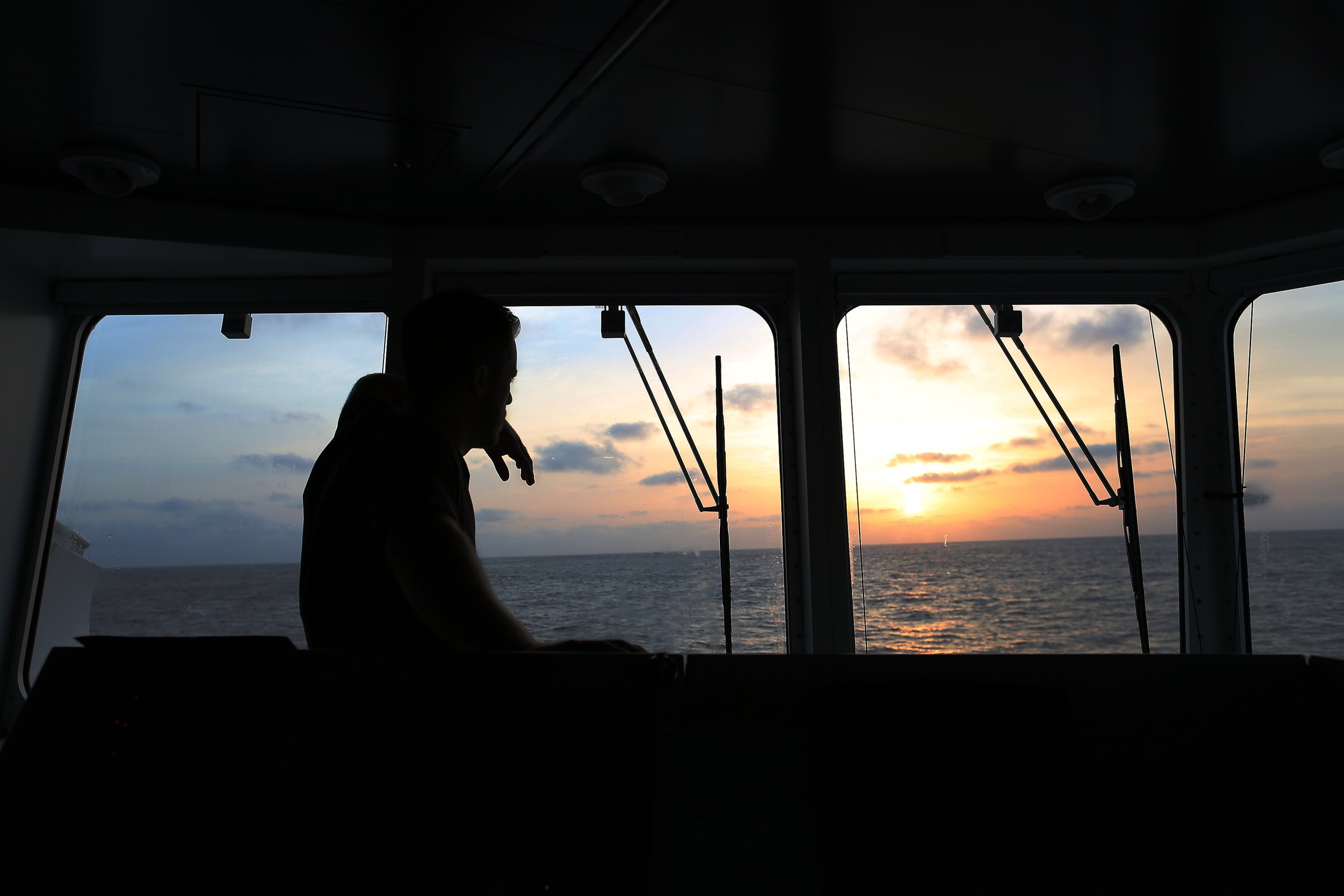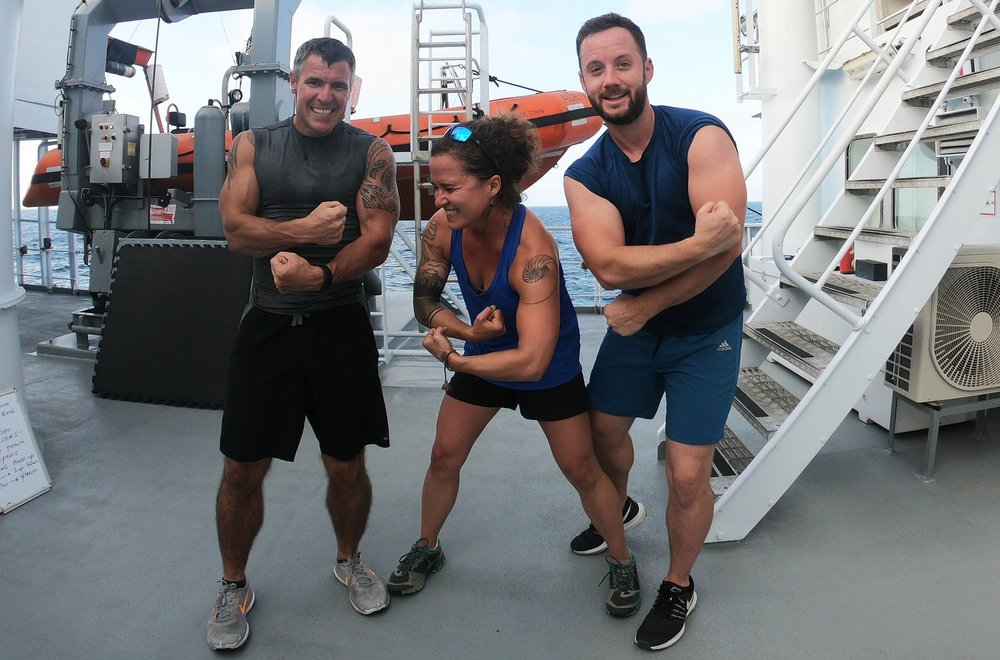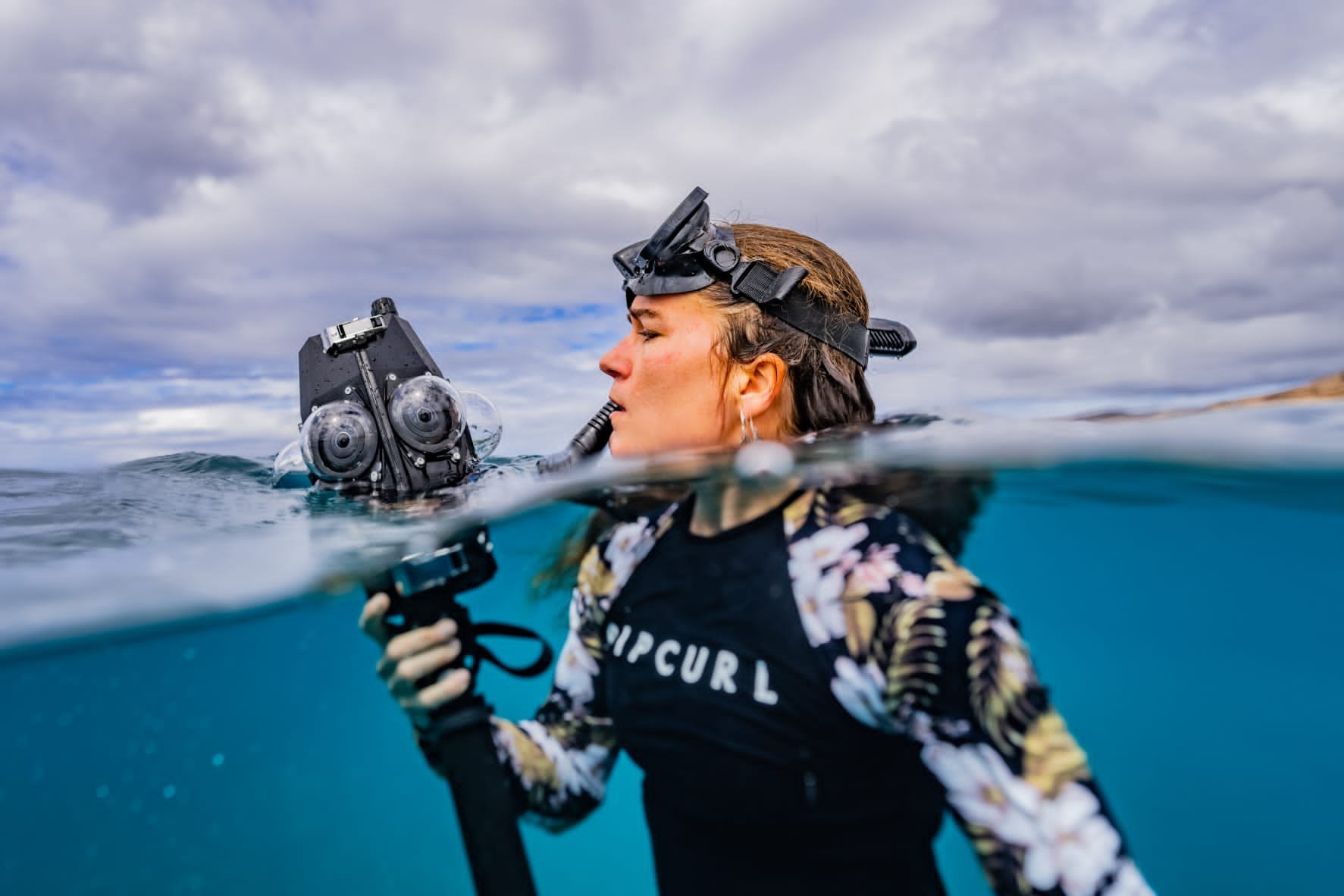You asked me what my cause is. The only cause I’ve got is my own freedom.
— Gregory David Roberts, Shantaram
Five years ago today, I left my position at the UNC Office of Research Communications to become an independent science communicator.
Typing that sentence feels a bit surreal. I can’t believe it’s been five years already.
I will never forget the heavy weight of anxiety and frenetic nerves that accompanied the decision to quit my job (a really good job!) and start my own business. After several years of earning a regular salary (along with a 401K, paid vacation time, good health insurance etc) electing to become a full-time freelancer seemed like a crazy idea.
My parents thought my decision was rash. My friends thought it was badass. I alternated between feeling excited and empowered, and then completely overwhelmed and intimidated.
I often wish I could go back to that time and tell myself: As scary at it seems, this is the right move. You are in for the ride of your life, but you can handle it.
Throughout my freelance career, and especially over the last year, I’ve written about the many ways I’ve embraced this untraditional path — like how I find balance and why I cultivate rituals. I’ve also tried to be open and honest about the challenges and low points.
In conversations about freelancing, it’s easy to list all the arduous aspects: finding clients and projects, managing money, taxes, and insurance, completing mountains of paperwork, maintaining regular self-promotion, and getting paid a fair amount.
When people ask about the best parts of my work, the answers also come easily: traveling to some of the most remote corners of the planet, learning about a myriad of scientific research, documenting the intersection of humanity and nature, and meeting incredible people from all over the world.
Still, attempting to “sum up” everything I have learned and experienced in the last five years seems impossible. I tried to do it by the numbers: 16 expeditions, 476 shipmates, 350 days at sea, and approximately 20,000 nautical miles — but those figures feel impersonal. Plus, I’m not a numbers person. I’m a writer.
So I started reading through old blog posts, trying to distill the most meaningful adventures and lessons. The reality is there are just too many to compile here (add this to the list of reasons I want and need to write a book.)
For now, I have picked five moments to revisit. They are not the very best moments or the very worst — but together they represent the wild ways my life has evolved over the past five years. The timing, location, and emotions associated with each of these moments span the globe, but they all emerge from the same foundation: freedom.
To go to sea
When Chief Officer Jason Garwood hands me a mug of tea, I accept it gratefully and gently blow on the emanating steam. The force of my breath forms tiny ripples across the small circle of hot liquid. Outside, the early morning breeze generates the same effect, creating steady, rhythmic waves across the surface of the northeastern tropical Pacific. Right now we are roughly 215 miles off the coast of southern Mexico.
I sip my tea slowly, savoring the rich flavor, and stare at the horizon through the giant windows on the bridge. As we watch the sky change colors, Jason and I chat about the places we're from: Bristol (the U.K.) and Chapel Hill (the U.S.) We talk about life at sea versus life at home. Even though we are both 30-years-old and regularly spend several months of the year at sea, Jason and I have radically different lives — he is married with two children, and I'm a single nomad.
Still, we enjoy some good chats in these early morning hours. He tells me a little bit about his family, and I tell him a little bit about my righteous friend group. We also often talk about running — strategies for pounding out miles on treadmill, and our favorite places to run on land.
Today is my 42nd day aboard the R/V Falkor and my 75th day at sea this year. When I told friends and family that I would be spending two months in the Pacific Ocean this summer, the conversation usually went something like this:
friend: “Wow! What islands are you going to?”
me: “Actually, we’ll be in the middle of the ocean the entire time. I won’t see land for about a month.”
I wondered if this would bother me. Will I get sick of the open ocean?
As I finish my tea, the sun (now high in the sky) scatters shimmering light across the vast expanse of water, highlighting the crest of each individual wave.
I smile. Nope. I am definitely not sick of the ocean.
— excerpt from Press Repeat
Morning rituals are important. Chief Officer Jason Garwood watches the sunrise from the bridge of R/V Falkor.
Afternoons are for strength training. Working out with Mick and Luke every day keeps me fit and sane during our long weeks at sea.
To take time for myself
Sharp, loose lava rocks lurch under my boots. I stagger slightly, adjust my stance, and keep going. I will spend the next 10 hours hiking up and down this volcano, but my footing will never feel completely steady.
This lack of balance is nothing new. Having just returned to land after three weeks at sea, I’ve been trying to find solid footing (physically and mentally) for the past six days.
Coming back from a big expedition requires a period of adjustment. I often equate it to scuba diving. If you come up too fast from a deep dive, nitrogen bubbles in your bloodstream will burst.
Likewise, transitioning too quickly from expedition life back to “real life” can result in the mental equivalent of the bends.
When I finish an expedition, I am always divided between the euphoria of having achieved my goal and the exhaustion. The question I am often asked is: "What's next? What's your next epic trip?" But, in fact, the adventure that I just lived is not over yet. The return home is part of it, and it is, for me, the most difficult part. — Martin Trahan
I learned this lesson after back to back expeditions last summer. Knowing I would not be ready to go straight back to North Carolina after the Nautilus arrived in port in Honolulu, I made plans to stay in Hawaii for a little while.
We all have different ways of engaging in self-care. My preferred method is a long hike up a big mountain, preferably a volcano. So today, I’m climbing Mauna Loa. The summit is 13,679 feet. Right now I’m somewhere between 11,000 and 12,000 feet.
— excerpt from Decompression Time
Time to get high. After a month at sea level, it feels good to breathe thin air.
Summit self-care. Negative thoughts evaporate as I behold Mauna Loa’s massive caldera.
To find my people
Pasadena, California | Winter 2020
Abundant sunshine illuminates the leafy courtyard at the center of the NASA Jet Propulsion Laboratory campus. I’m standing next to Brandon Rodriguez, an education specialist here at JPL.
He points to a group of people walking in a line. “That’s one of our few public tours — there’s about a six month waiting list to get into one of those.”
I nod. “Yeah, when I tried to sign up I got an automated response that said no tours available.”
Brandon grins. “Don’t worry. This will be much better.”
I had the pleasure of meeting Brandon while we were both living and working aboard the E/V Nautilus last summer. Parallels abound between ocean expeditions and space travel, and I loved hearing Brandon’s perspective on our deep sea research in the equatorial Pacific. During the month we worked at sea together, he patiently answered a million questions (from me and many others) about space exploration and what it’s like to work for NASA. After weeks of hearing about all the amazing things happening at JPL, I knew I wanted to visit.
Our first stop is the Spacecraft Assembly Facility: the birthplace of rovers for Mars and satellites for far-flung planets in our solar system. Right now engineers are placing the final touches on the Mars 2020 rover.
“This is crunch time,” Brandon says. “There are people in here around the clock.”
Later this month, the team will carefully pack the rover off to Florida. In six months, NASA will launch it into space from the Cape Canaveral Air Force Station. The rover should land on Mars by February of 2021.
Brandon describes various aspects of the clean room, but I can’t take my eyes off the rover. It’s hard to believe that just over a year from now this incredible piece of technology will navigate across the surface of Mars.
As we continue across JPL’s campus, Brandon peppers me with fascinating facts and NASA history. I feel lucky to know this nerdy, charismatic person, and I still can’t believe our paths crossed in the middle of the ocean.
During long days at sea, many people have conversations about potential travel plans (“you should come visit me!”) but they rarely become a reality. While the bonds between shipmates are strong, they don’t always turn into lasting friendships.
I’m glad that’s not the case with Brandon. I think we will be friends for years to come.
— excerpt from Tiny Electronic Voices
Friends at sea: Watching sunrise with Brandon from the monkey deck of E/V Nautilus. Pacific Ocean | August 2019
Buds on land: Hiking with Brandon in the San Gabriel Mountains. Southern California | January 2020
To learn, to grow, and to teach
Portland, Oregon | Spring 2022
I go for a short walk to reflect on the process of preparing for this presentation. I began thinking about what to say in this talk months ago, and I have spent the last few weeks drafting various versions. I started out with a list of bullet points — tidbits of advice like:
Hire an accountant!
Spend time and money on your website!
Be confident!
But spitting out bite-sized nuggets of “advice” felt unnatural and superficial. After going through several iterations of a presentation centered around this list of bullet points, I came back to a passage I read two years ago in Randy Olson’s book, Don’t be Such a Scientist:
There is nothing more powerful than the first-person narrative—the voice that can speak to a crowd and say,
“This is what I know; this is what I have experienced; this is how I feel.”
I realized I don’t need to give people a list of advice. I need to tell them my story.
And when I step on stage and pick up the microphone, that is what I do.
“I’m here today to tell y’all what I know about becoming a full-time freelance science communicator,” I say, with as much confidence as I can muster. “Which is funny — because when I quit my job in 2018, I didn’t know anything about being a freelancer.”
At the end of the talk, I’m hit with a flurry of emotions — exhilaration, exhaustion, excitement, and relief. I also feel happy. I did it! I even made a few people laugh! And I saw some heads nodding while I was speaking. I think the whole thing went pretty well.
And then audience members start coming up to me — some of them I’ve already met and spoken with, and some of them I haven’t. But all of them have questions. I’m honored to sit down for a conversation with each of them.
— excerpt from Science Talk 22
This is what I know: Public speaking can be scary, but the opportunity to share my story in this setting is incredible.
Quoted: “Know who you are, and what you have to offer as a professional science communicator.”
To be brave
In the past five years, I have joined 16 oceanographic research expeditions. Nine of those have been contracts with the Ocean Exploration Trust aboard the E/V Nautilus. I deeply appreciate the values and mission of OET and I adore my shipmates on Nautilus. But every time I step onto that ship, I can’t help feeling a bit nervous and intimidated. Because every single expedition includes new challenges.
During this most recent expedition season, one of those new challenges was learning how to operate a brand new Insta360 Pro camera inside a Mantis Sub housing.
Bob Ballard purchased this state-of-the-art camera rig with the expectation that my colleagues and I would capture super high definition (8K) footage to be used in virtual reality experiences. When Jonathan Fiely told me about the unit’s $20,000 price tag and Dr. Ballard’s big dreams for the footage, I had to take a deep breath.
“So, no pressure!” Jonathan said with a smirk. “Try not to screw it up.”
My job regularly involves this type of scenario — working in a remote place, alongside extremely intelligent people, with cutting-edge equipment. I have to learn new technology in high pressure situations, and I have to be willing to do this kind of crazy shit over and over again.
It is not a job for the faint of heart.
But jumping into the open ocean with expensive tech isn’t the scariest thing I do. Being a full-time freelancer in a competitive field means I have to continuously “put myself out there”. While it still makes me feel uncomfortable at times, I have to promote myself and my work. Send emails to eminent people. Publish my newsletter. Post something creative and compelling on social media. Write candidly about my experiences on this blog. Stand on stage at a conference and talk about myself.
I find some of these tasks tedious. Some of them make me cringe. Some of them make me insanely nervous. But through a gritty combination of courage and determination, I do them anyway.
— excerpt from Build your own Dream
Learn fast: Figuring out how to use a Mantis 360 underwater housing for the first time while working with the Nautilus team off the coast of Maui | Photo by Nova West
Wrangling equipment underwater: I detach the Mantis from our DIY rigging and prepare to swim it up to the surface | Photo by Nova West
To not fear the future
While they didn’t approve at first, my parents eventually came around to my “rash” career choice. The day before I officially left my job at UNC, my mom gave me a copy of Stages by Herman Hesse. I memorized the entire poem, but perhaps the most pertinent stanza is this one:
Since life may summon us at every age,
be ready heart, for parting, new endeavor.
Be ready bravely and without remorse
to find new light that old ties cannot give.
In all beginnings dwells a magic force
for guarding us and helping us to live.
These words fortified my heart and mind during the early days of being a full-time freelancer. And while I am no longer at the beginning of my “new endeavor”, I often return to this poem during moments of doubt.
Even after five years, there are still many moments of doubt.
On the good days, I feel empowered and proud of myself. But on the bad days, I dwell on the tenuous nature of the path I’ve chosen. In an ideal world, I would continue to freelance and be my own boss forever. But the world is not an ideal place and there are no guarantees in life. The organizations that regularly hire me could shut down. I could suffer a debilitating injury or develop a serious health issue. Artificial intelligence could render my job obsolete. Another (more deadly?) pandemic could ravage the planet.
For a myriad of reasons, the remarkable freedom I enjoy could be stripped away at any time.
But I will not live in fear. No matter what happens in my career or in my life, I will strive to be ready bravely. And I will always cherish my freedom.
Want to read more reflections on freelance life? Check out these posts: Liminal Space, Merely Tenacity, Doing It, Decompression Time, and Let Go











